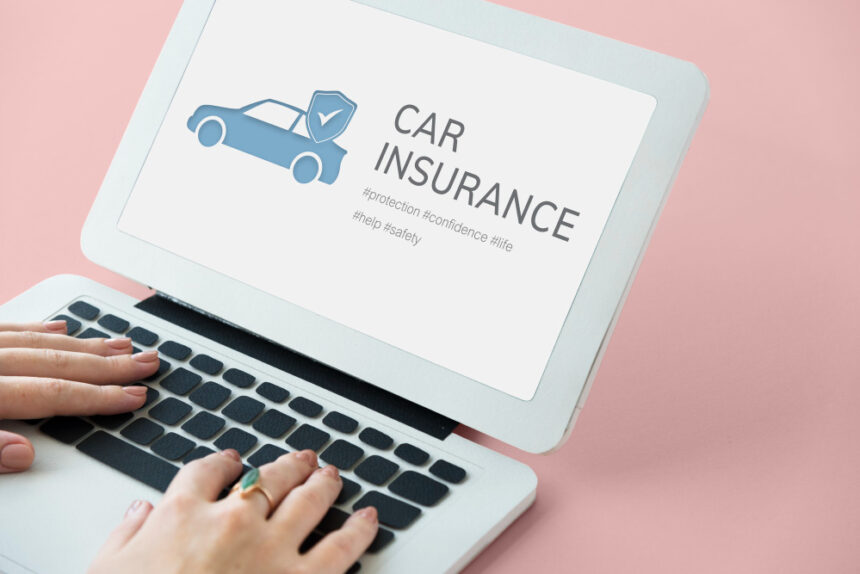When it comes to protecting your vehicle, securing the right car insurance policy is one of the most important steps you can take as a responsible driver. With a variety of policies available, navigating the car insurance landscape can be overwhelming for many individuals.
Whether you’re a first-time buyer or someone looking to switch providers, understanding the basics of car insurance is essential. This guide will help you make an informed decision by breaking down everything you need to know before buying a policy.
1. What is Car Insurance?
At its core, car insurance is a contract between you and an insurance provider that protects you financially in case of accidents, theft, or damage to your vehicle. Car insurance policies typically include coverage for property damage, medical costs, and liability for injuries caused to others in the event of an accident.
There are different types of car insurance coverage, and the extent of protection varies depending on the policy you choose. The three main categories of car insurance are:
- Liability Coverage: Covers damages and injuries to others caused by your actions while driving.
- Collision Coverage: Covers damages to your own vehicle in case of an accident.
- Comprehensive Coverage: Covers non-collision damages, such as theft, fire, or natural disasters.
Each type of coverage has its own advantages, and the policy that works best for you depends on your needs, driving habits, and budget.
2. Types of Car Insurance Coverage

Understanding the different types of car insurance coverage available is crucial before purchasing a policy. Here’s a breakdown of the most common options:
Liability Insurance: In many places, liability insurance is a legal requirement. It covers bodily injury and property damage costs when you’re at fault in an accident. It is divided into two parts: bodily injury liability and property damage liability. Liability coverage is vital to ensure you’re financially protected in case of an accident.
Collision Coverage: This type of insurance covers repairs or replacement of your vehicle if it’s damaged in a crash. Even if you’re not at fault, collision coverage helps pay for the repair or replacement of your car.
Comprehensive Coverage: Comprehensive insurance covers events outside of accidents, such as theft, vandalism, fire, or damage from natural disasters.
If your car gets damaged by something other than a collision, this coverage can save you from significant repair bills.
Uninsured/Underinsured Motorist Coverage: This policy ensures you’re protected if you’re in an accident caused by a driver who doesn’t have insurance or has insufficient coverage to pay for damages. In some areas, this type of coverage is mandatory.
Medical Payments/Personal Injury Protection (PIP): This coverage pays for medical expenses resulting from an accident, regardless of who is at fault. It can also cover lost wages and other related costs, depending on the policy.
Gap Insurance: If you owe more on your car loan or lease than the car is worth, gap insurance can cover the difference in case of a total loss, ensuring you don’t have to pay out of pocket.
Roadside Assistance: This optional coverage provides services like towing, flat tire changes, and battery jump-starts, ensuring you’re never stranded on the road.
3. Factors that Affect Car Insurance Rates
Car insurance rates are influenced by a wide range of factors. When buying a policy, it’s essential to understand the elements that insurance companies consider when determining your premiums. Some of the key factors include:
Driving History: Your past driving record plays a significant role in determining your rates. If you have a history of accidents or traffic violations, expect to pay higher premiums.
Age and Gender: Statistically, younger drivers and male drivers tend to pay higher insurance premiums. Insurance companies see these groups as higher risk due to their relative inexperience or riskier driving habits.
Vehicle Type: The make, model, and year of your vehicle also influence your insurance rates. Luxury cars, sports cars, and vehicles with high repair costs generally cost more to insure. On the other hand, cars with high safety ratings or low theft rates can help lower your premiums.
Location: Where you live plays a huge role in your insurance costs. Urban areas with high traffic volumes and a higher incidence of accidents typically have higher insurance rates compared to rural areas.
Credit Score: Many states allow insurers to consider your credit score when determining premiums. A good credit score can lower your rates, while a poor credit score may result in higher premiums.
Annual Mileage: The more you drive, the more likely you are to be involved in an accident. If you drive less frequently, you may be eligible for discounts on your car insurance.
Deductible Amount: The deductible is the amount you pay out of pocket before your insurance kicks in. Opting for a higher deductible can lower your monthly premium, but it also means more money upfront in case of an accident.
4. How to Choose the Right Car Insurance Policy

Choosing the right car insurance policy requires balancing coverage, price, and provider reputation. Here are some tips to help you select the best policy for your needs:
Evaluate Your Coverage Needs: Consider the type of car you drive, how often you drive, and your budget. If you drive a newer car or one with a high market value, comprehensive or collision coverage may be worth the investment. However, if your car is older or not worth much, you may opt for only liability coverage.
Compare Quotes from Multiple Providers: Different insurers offer varying rates for the same coverage. Take the time to shop around and compare quotes from multiple insurance companies. Online comparison tools can make this process easier.
Understand the Policy Terms: Carefully read through the policy documents to understand the coverage, exclusions, and limits of the insurance. If you have questions, ask the insurer for clarification before making a decision.
Check for Discounts: Many insurance companies offer discounts for safe driving, bundling policies (such as home and auto), installing safety features in your car, or maintaining a clean driving record. Be sure to inquire about available discounts to lower your premium.
Consider Customer Service and Claims Process: A low premium is important, but the quality of customer service and the efficiency of the claims process are equally crucial. Look for an insurer with good customer reviews, especially regarding how quickly and fairly they process claims.
Examine the Provider’s Financial Stability: You want to ensure that your insurance provider is financially stable and can pay out claims when needed. Check the insurer’s ratings with agencies like A.M. Best or Moody’s to gauge their financial health.
5. Common Car Insurance Mistakes to Avoid
Many drivers make mistakes when buying car insurance that can lead to unnecessary expenses or inadequate coverage. Here are some common pitfalls to avoid:
Underestimating Coverage Needs: It may be tempting to opt for the minimum coverage required by law, but this might leave you underinsured in the event of a major accident. It’s essential to choose a policy that offers sufficient protection for your vehicle, health, and liability.
Ignoring Policy Exclusions: Not all situations are covered by car insurance. Review your policy’s exclusions and make sure you’re aware of what isn’t covered. For instance, some policies don’t cover damage caused by natural disasters or flooding.
Neglecting to Review Your Policy Regularly: Your circumstances and vehicle may change over time. Regularly reviewing your policy ensures that it continues to meet your needs and that you’re not paying for unnecessary coverage.
Not Shopping Around for Quotes: Some drivers settle with their current insurer without shopping around for better deals. Comparing quotes can help you find better rates and coverage, saving you money in the long run.
Overlooking Discounts: Many insurers offer discounts, but not all drivers take advantage of them. Always ask about discounts for things like being a good driver, having safety features in your car, or bundling insurance policies.
6. Conclusion
Choosing the right car insurance policy can be a complicated process, but it’s essential to make an informed decision. By understanding the types of coverage available, factors affecting insurance rates, and tips for selecting the right policy, you can find a plan that offers the protection you need at a price you can afford.
Don’t forget to shop around, compare quotes, and ask about available discounts to make sure you’re getting the best deal possible. Remember, car insurance is not just a legal requirement but an essential safeguard for your financial future on the road.

